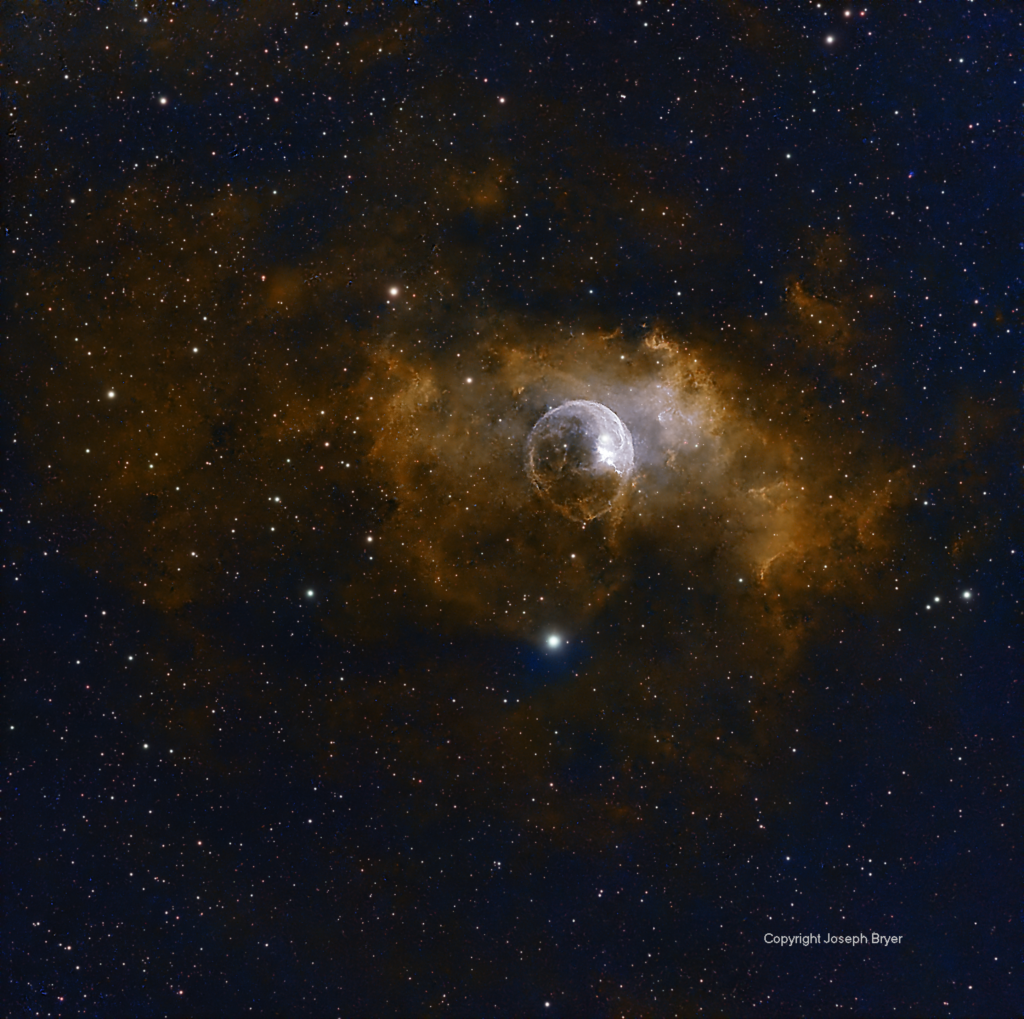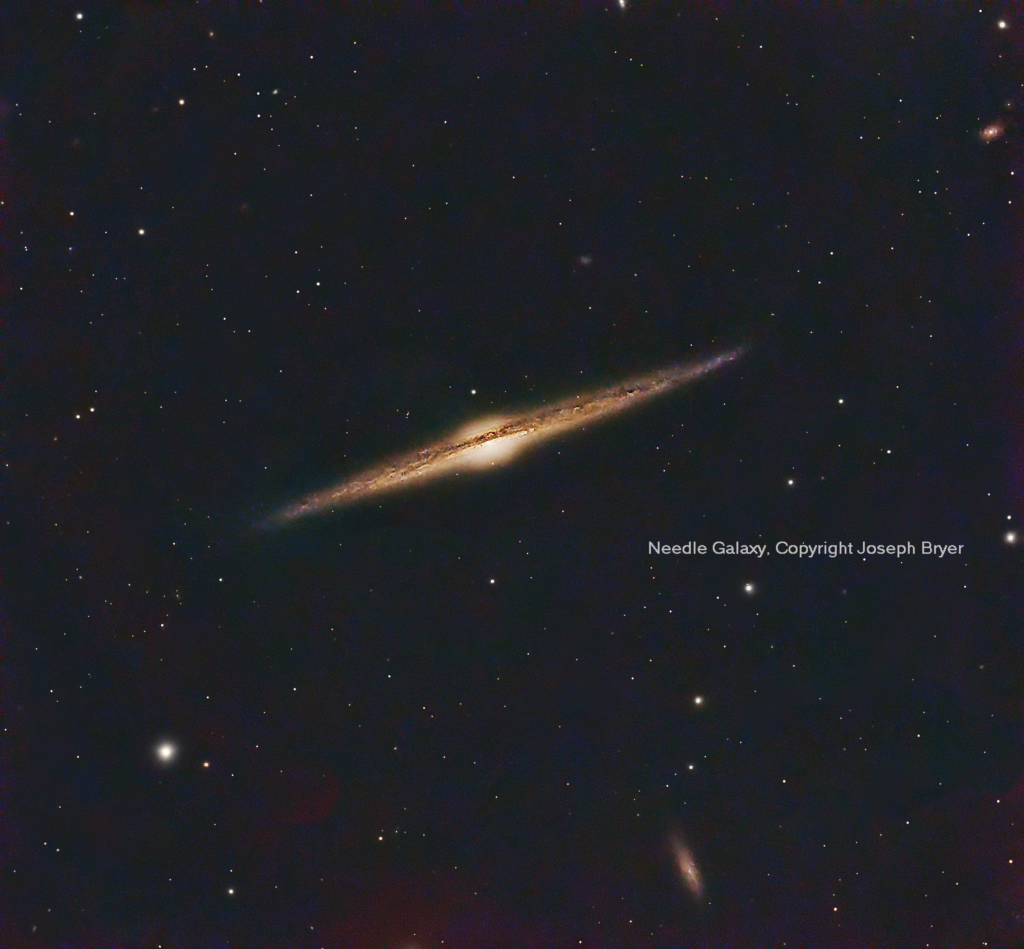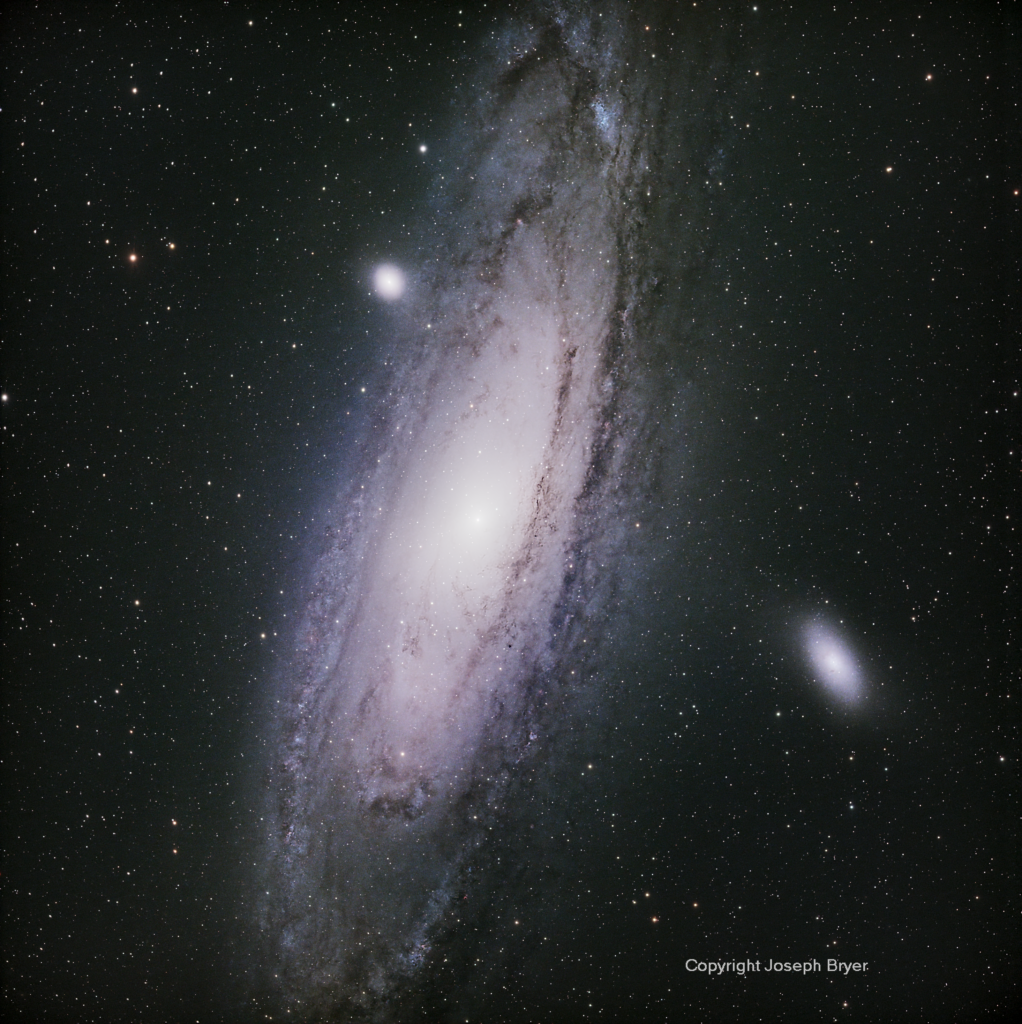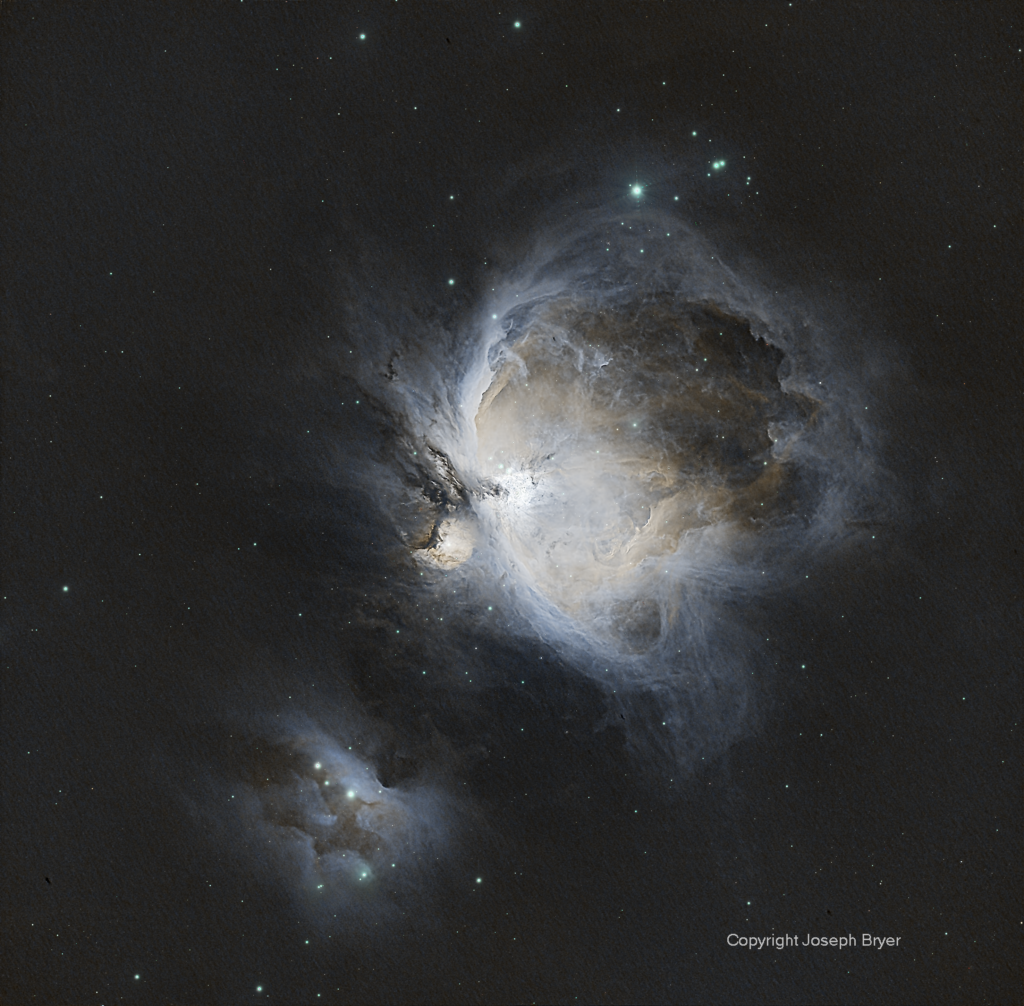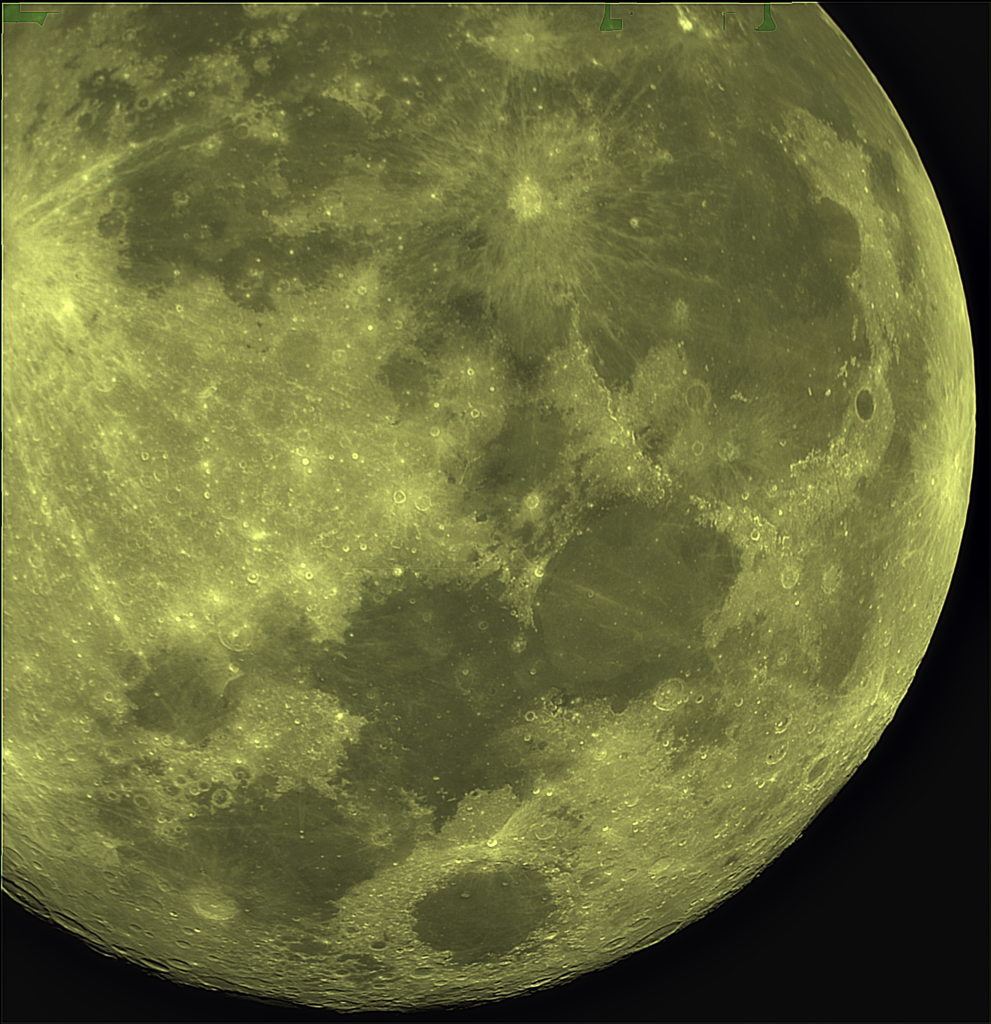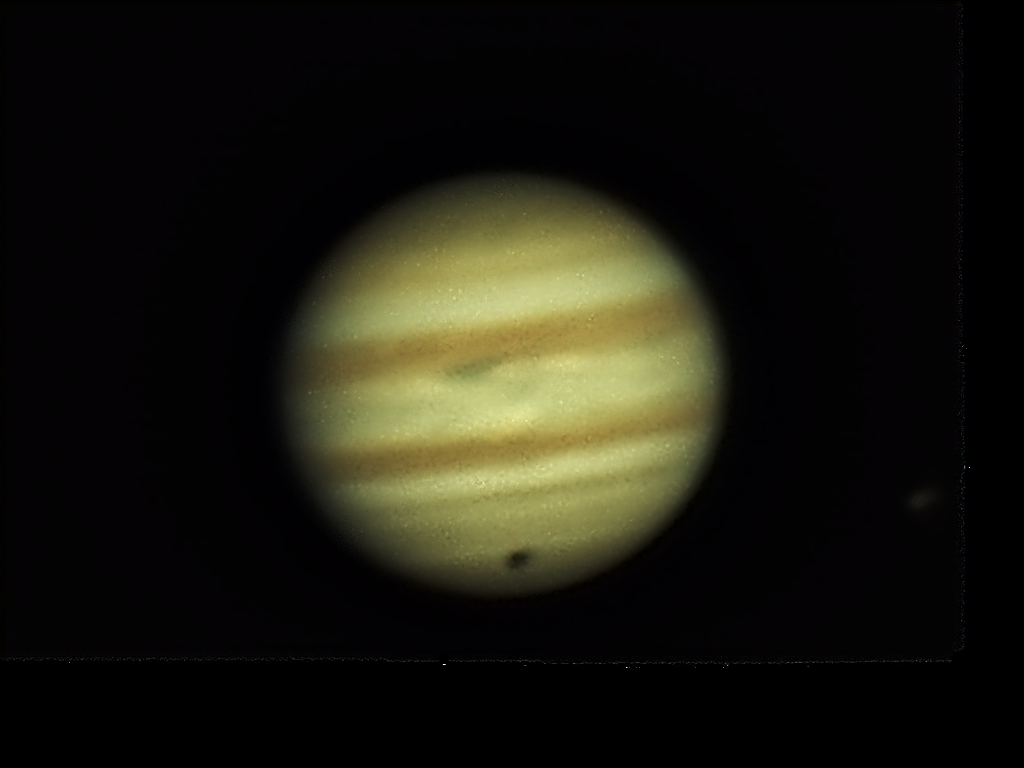Bubble Nebula, also known as NGC 7635. This is a star forming region near the constellation Cassiopeia.
Details: 79 sub-exposures of 90 sec each were superimposed on one another, and multiple calibration frames (flat, darkflat, bias) added to final image quality. The frames were stacked with Deep Sky Stacker, and the integrated image was processed with PixInsight.
Equipment: Celestron NexStar 8SE with 0.63 Celestron reducer, ZWO AM5 mount, ZWO off axis guider with ASI120 MM guide camera, N.I.N.A session management and image acquisition software, ASI 533 MC imaging camera, with Optolong L’Enhance narrowband filter.
Imaged October 19, 2024 from a driveway in southeastern Pennsylvania.
Needle Galaxy, a.k.a. NGC 4565, is a spiral galaxy seen on edge, so it appears as a line from our perspective.
Details: 94 sub-exposures of durations ranging between 60 sec and 300 sec. Calibration frames and stacking as per Bubble Nebula.
Equipment: Same equipment as in Bubble Nebula above, except a Baader ultraviolet/infrared cut filter was used instead of L’Enhance.
Imaged April 19, 2024 from southeastern PA location
Andromeda Galaxy, a.k.a. M31. This object, 2.4 million light years from Earth, is the most distant object that can be seen with the naked eye by some people at very dark sites (only the bright core may be visible as a faint smudge of light). It will collide with Milky Way (our galaxy). The image is the width of six full moons.
Details: 87 sub-exposures of 40 sec each.
Equipment: Celestron NexStar 8SE with HyperStar v. 4, which greatly increases field of view and allows rapid image acquisition. No reducer, no guiding. Optolong L’Pro light pollution filter.
Imaged October 21, 2024 from a driveway in southeastern Pennsylvania.
See BLOG POST about this image.
Orion Nebula Complex, a.k.a. M42. Naked eye visible as the middle of three “stars” comprising Orion’s sword, which is below his belt (the three bright diagonal stars in the constellation). This is a very active star formation region, which excites electrons in the surrounding gases, illuminating the cloud.
Details: Multiple exposures of 0.5 sec to 5 sec were combined in PixInsight to form an HDR composite image revealing both very bright and also dim structural elements without overexposure in any region.
Equipment: Same as Andromeda Galaxy, except L’Enhance filter instead of L’Pro.
Imaged February 6, 2024 from a driveway in southeastern Pennsylvania.
Details: 9 second video comprised of 52 individual frames, which were stacked (superimposed) with AutoStakkert 4.0. Post-processing in PixInsight.
Equipment: NexStar 8SE with 0.63 reducer. Imaged with ZWO ASI 533 MC with Moon filter. Image capture software was ZWO ASICap.
Imaged October 18, 2024
Jupiter
Detail: 10 sec video from which the best quality frames were stacked (as in Moon above). Post-processing in PixInsight.
Equipment: NexStar 8 SE with ZWO ASI178 MC camera.
Atmospheric seeing conditions were mediocre. Image sharpness would improve with more video data and improved seeing conditions and atmospheric transparency. Dark spot near bottom is one of Jupiter’s moons transiting.
Imaged November 3, 2024

